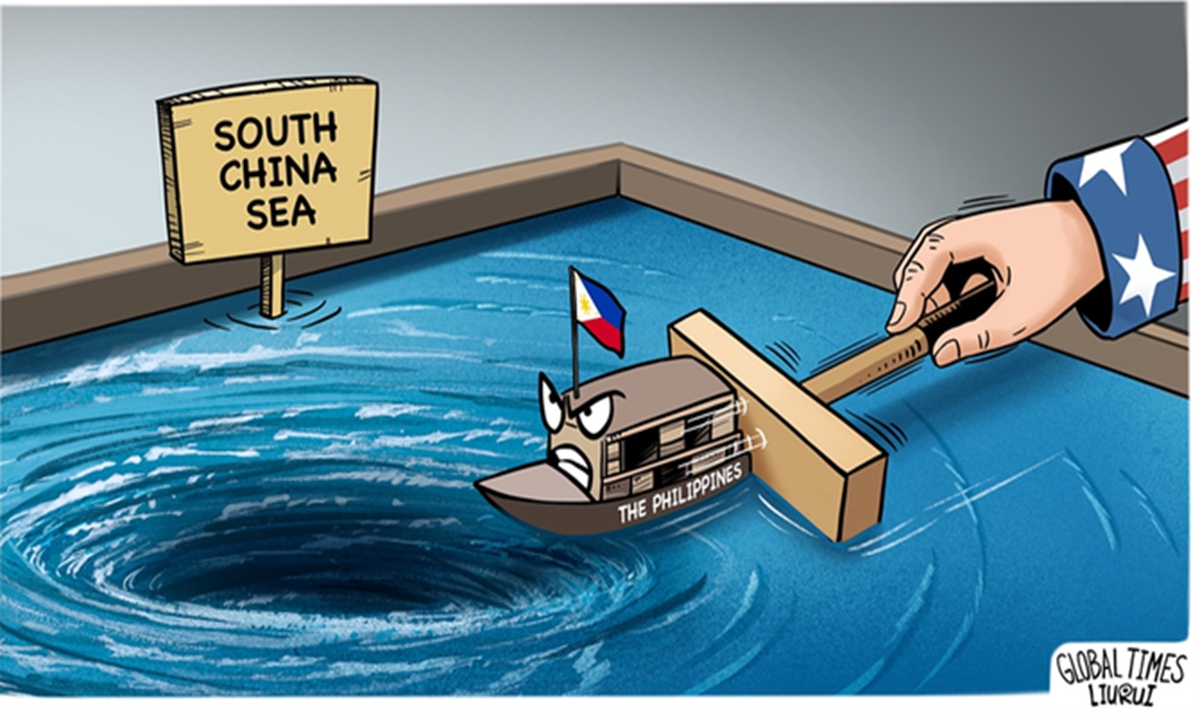
Illustration: Liu Rui/GT
Experts interviewed by the Global Times at the 5th Symposium on Global Maritime Cooperation and Ocean Governance, recently concluded in Sanya, Hainan Province, highlighted that the militarization of the South China Sea, initiated by the US, has become increasingly intense. Moving forward, attention should be focused on the activities of the US Marine Corps and the application of unmanned combat platforms, experts said.
In the session titled Settlement of Maritime Disputes: Dialogue or Confrontation, Wu Shicun, director of academic committee of China's National Institute for South China Sea Studies and Chairman of Huayang Research Center for Maritime Cooperation and Ocean Governance, stated that the primary challenge in the South China Sea disputes is the US, as it has abandoned the neutral stance on the region.
"The militarization of the South China Sea was not initiated by the surrounding countries but triggered by the US," one expert told the Global Times during the symposium. The expert also noted that this trend is unlikely to weaken in the future, as the US has consistently relied on military forces to pressure other nations and has been steadily increasing its defense budget in recent years. These characteristics are expected to persist, and the ongoing militarization in the region is likely to spark an arms race.
Rommel C. Banlaoi, Chairman of the Philippine Institute for Peace, Violence, and Terrorism Research, expressed his concerns to the Global Times, stating "I'm very concerned about the increased militarization of the South China Sea because it disrupts the peaceful resolution of disputes. Such disputes can only be settled peacefully - not through militarization, but through political and diplomatic negotiations involving the parties directly concerned. Militarization will only exacerbate the challenges of achieving a peaceful resolution."
Ei Sun Oh, Principal Adviser for the Pacific Research Center of Malaysia, noted that both China and the US maintain military forces, such as warships, in the region, and this presence is unlikely to change. He added, "The US cooperates militarily with countries like the Philippines and Singapore, and to some extent, these Southeast Asian nations do not oppose the US' presence in the region. However, no one wishes to see war."
According to reports, US military aircraft conducted approximately 7,872 sorties over the South China Sea in 2023. Hu Bo, director of South China Sea Strategic Situation Probing Initiative, told the Global Times that there are two emerging trends in US military activity in the Asia-Pacific. First, the role of the US Marine Corps is expected to expand significantly. Second, the militarization of the South China Sea is not solely driven by the US military but also involves allied forces, particularly Japan and Australia. Of particular concern is the large-scale deployment of underwater forces and unmanned systems.
Hu observed that US military deployments in the South China Sea are likely to remain stable during peacetime unless a major event occurs. Similarly, its air and naval forces in the Asia-Pacific are unlikely to see significant increases.
Meanwhile, China's growing comprehensive national strength and military capabilities are crucial for maintaining regional peace and stability. Ei Sun Oh highlighted that despite maritime disputes between China and some Southeast Asian nations, these countries can still collaborate on joint resource development, such as oil and gas exploration. "In this context, dialogue can take place in a positive atmosphere. With its technological expertise and creative mechanisms, China is well-positioned to play a leading role," he added.




